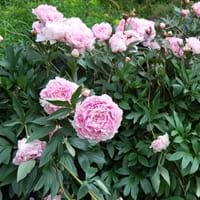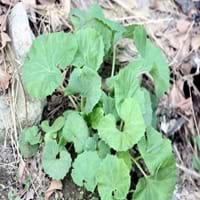Life Span
Perennial
Perennial
Type
Flowering Plants, Shrubs
Herbaceous Perennial
Origin
Asia, North America, Southern Europe
China, Japan, Korea
Types
Aristocrat, Buckeye Belle, Henry Bockstoce , Abalone Pearl, Coral Supreme, Cytherea, Charlie's White
Not Available
Number of Varieties
Not Available
Habitat
Hillside, Woods
Lake Sides, River side
USDA Hardiness Zone
3-9
5-9
Sunset Zone
A3, 1a, 1b, 2a, 2b, 3a, 3b, 4, 5, 6, 7, 8, 9, 10, 11, 12, 13, 14, 15, 16, 17, 18, 19, 20, 22
2a, 2b, 3a, 3b, 4, 5, 6, 7, 8, 9, 10, 14, 15, 16, 17, 18, 19, 20, 21, 22, 23, 24
Habit
Clump-Forming
Clump-Forming
Flower Color
Pink, Red, White
Light Yellow, Ivory
Flower Color Modifier
Not Available
Bicolor
Fruit Color
Not Available
Not Available
Leaf Color in Spring
Dark Green
Green
Leaf Color in Summer
Dark Green, Green
Green
Leaf Color in Fall
Bronze, Dark Green, Green
Green
Leaf Color in Winter
Not Available
Not Available
Leaf Shape
Compound
Orbiculate
Plant Season
Spring
Spring, Summer, Fall
Sunlight
Full Sun, Part sun
Partial shade, Full Shade
Type of Soil
Loamy
Clay, Loam, Sand
The pH of Soil
Neutral
Acidic, Neutral, Alkaline
Soil Drainage
Well drained
Poorly Drained
Bloom Time
Spring, Summer
Early Spring, Late Winter
Tolerances
Not Available
Wet Site
Where to Plant?
Ground, Pot
Container, Ground
How to Plant?
Grafting, Seedlings, Stem Planting, Transplanting
From Rhizomes
Plant Maintenance
Medium
Medium
Watering Requirements
Does not require lot of watering, It cannot sustain wet-feet, Keep the ground moist but not water-logged, Needs watering once a week, Prefer drip-irrigation instead of Over-head watering, Water occasionally
Keep ground moist, Requires consistently moist soil
In Summer
Lots of watering
Lots of watering
In Spring
Moderate
Moderate
In Winter
Average Water
Average Water
Soil pH
Neutral
Acidic, Neutral, Alkaline
Soil Type
Loamy
Clay, Loam, Sand
Soil Drainage Capacity
Well drained
Poorly Drained
Sun Exposure
Full Sun, Part sun
Partial shade, Full Shade
Pruning
Do not prune during shooting season, Prune to control growth, Remove dead or diseased plant parts, Remove deadheads
Cut or pinch the stems, Remove damaged leaves, Remove dead branches, Remove dead leaves
Fertilizers
All-Purpose Liquid Fertilizer
All-Purpose Liquid Fertilizer, Requires high amount of nitrogen
Pests and Diseases
Botrytis Blight, Leaf spot, Stem spot, Viruses
Red blotch
Plant Tolerance
Drought
Drought, Drought and Wet Site
Flower Petal Number
Semi-Double
Not Available
Foliage Texture
Coarse
Bold
Foliage Sheen
Glossy
Glossy
Attracts
Ants
Not Available
Allergy
Not Available
Not Available
Aesthetic Uses
Beautification, Bouquets, Showy Purposes, Used for decorating walls, fences, gates, hedges, etc.
Beautification
Beauty Benefits
Not Available
Not Available
Environmental Uses
Air purification
Air purification
Medicinal Uses
Cough, Gout, Headache, Heartburn, Kidney problems, Upset stomach, Urinary tract problems
Antiasthamatic, Expectorant, Miscellany
Part of Plant Used
Flowers, Root, Seeds
Flowers, Stem
Other Uses
Showy Purposes, Used as Ornamental plant, Used for fragrance
Not Available
Used As Indoor Plant
No
No
Used As Outdoor Plant
Yes
Yes
Garden Design
Feature Plant, Foundation, Mixed Border
Bog Garden, Container, Water Gardens
Botanical Name
Paeonia lactiflora
PETASITES japonicus 'Argentea'
Common Name
Herbaceous Peony
Giant Butterbur, Japanese Butterbur, Variegated Butterbur
In Hindi
Herbaceous peony
Japanese Butterbur
In German
Krautige Pfingstrose
japanische Pestwurz
In French
pivoines herbacées
Japanese Butterbur
In Spanish
peonía herbáceas
petasita japonesa
In Greek
ποώδη παιωνία
Japanese Butterbur
In Portuguese
peônia herbáceas
Carrapicho japonês
In Polish
piwonii zielnych
japoński Lepiężnik
In Latin
herbaceum AGLAOPHOTIS
Japanese Butterbur
Phylum
Magnoliophyta
Tracheophyta
Class
Magnoliopsida
Magnoliopsida
Order
Not Available
Asterales
Family
Paeoniaceae
Asteraceae
Clade
Angiosperms, Core eudicots, Eudicots
Angiosperms, Asterids, Eudicots
Tribe
Not Available
Not Available
Subfamily
Not Available
Not Available
Number of Species
Not Available
Season and Care of Chinese Peony and Japanese Butterbur
Season and care of Chinese Peony and Japanese Butterbur is important to know. While considering everything about Chinese Peony and Japanese Butterbur Care, growing season is an essential factor. Chinese Peony season is Spring and Japanese Butterbur season is Spring. The type of soil for Chinese Peony is Loamy and for Japanese Butterbur is Clay, Loam, Sand while the PH of soil for Chinese Peony is Neutral and for Japanese Butterbur is Acidic, Neutral, Alkaline.
Chinese Peony and Japanese Butterbur Physical Information
Chinese Peony and Japanese Butterbur physical information is very important for comparison. Chinese Peony height is 76.00 cm and width 76.00 cm whereas Japanese Butterbur height is 60.00 cm and width 120.00 cm. The color specification of Chinese Peony and Japanese Butterbur are as follows:
Chinese Peony flower color: Pink, Red and White
Chinese Peony leaf color: Dark Green
Japanese Butterbur flower color: Light Yellow and Ivory
- Japanese Butterbur leaf color: Green
Care of Chinese Peony and Japanese Butterbur
Care of Chinese Peony and Japanese Butterbur include pruning, fertilizers, watering etc. Chinese Peony pruning is done Do not prune during shooting season, Prune to control growth, Remove dead or diseased plant parts and Remove deadheads and Japanese Butterbur pruning is done Cut or pinch the stems, Remove damaged leaves, Remove dead branches and Remove dead leaves. In summer Chinese Peony needs Lots of watering and in winter, it needs Average Water. Whereas, in summer Japanese Butterbur needs Lots of watering and in winter, it needs Average Water.





